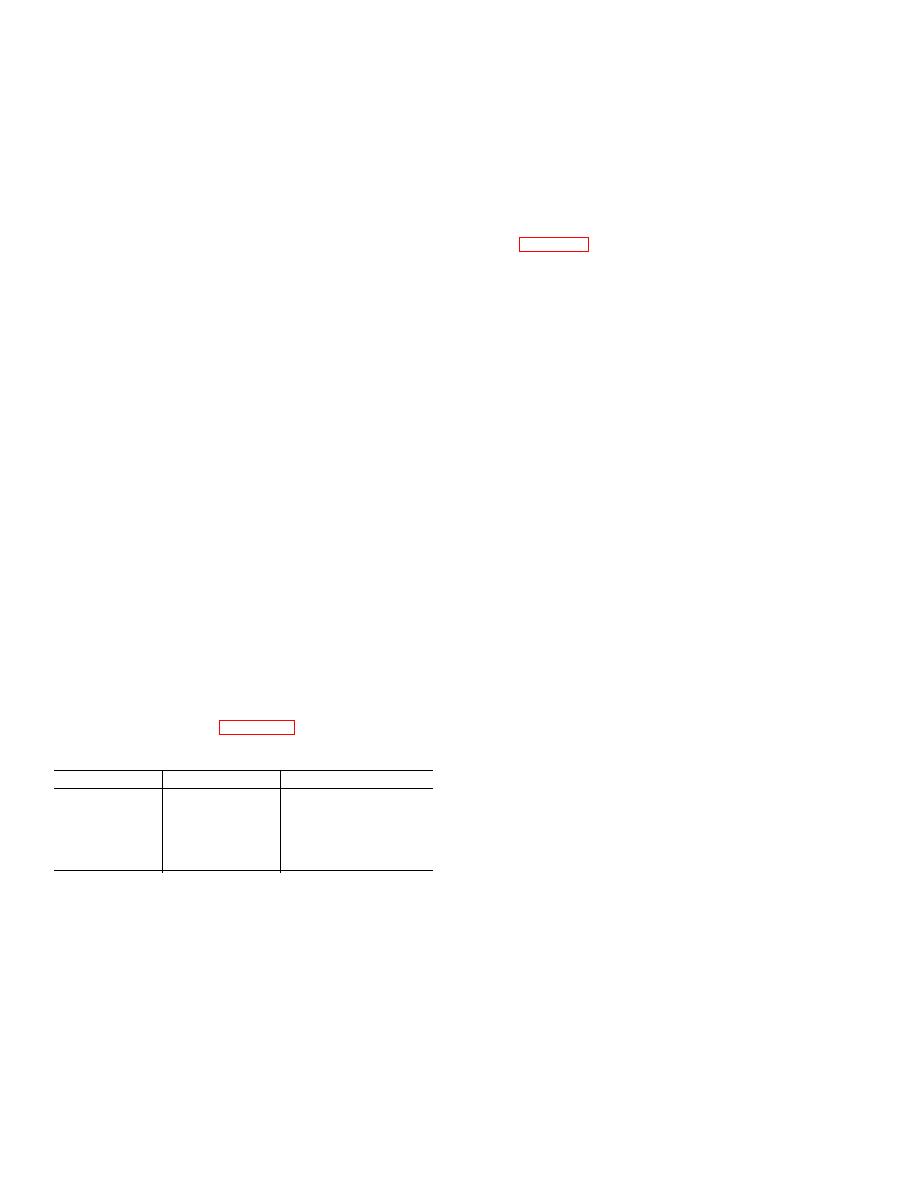
TM 5-3810-294-34
c. Heat. The production of acceptable quality
submerged-arc or inert-gas welding, the wire or wire-flux
combination need only match the lower strength steel.
welds in "T-1" steel depends on never exceeding a
Correct handling of electrodes, fluxes, and shielding
certain maximum heat. Use less heat than is required
gases is also very important. Low-hydrogen coated
for ordinary steels, so that the weld area will cool down
electrodes and fluxes, when exposed to the air, will pick
rather quickly. As long as "T-1" steel can cool rapidly it
up moisture. Damp electrodes and fluxes are excellent
will develop good, tough welds. There is only one
sources of hydrogen. Moist coatings will generate
practical way to control the time required for cooling.
underbead cracking, even though, when dry, they are
That way is to control the amount of heat put into the
classified as "low-hydrogen". So, in addition to choosing
weld. Table 2-3 is provided to spell out the
the right electrodes and fluxes, you must take steps to
recommended preheat and interpass temperatures for
keep them dry once the container is opened. Regarding
the thickness of upper turret flange steel provided on this
covered electrodes, never take the low hydrogen label
machine.
for granted. Make sure the electrodes are dry as follows:
d. Welding Procedures. The straightforward
(1) If your electrodes are in an undamaged metal
stringer bead method is preferred for welding "T-1" steel.
container and you are sure the container was air
Do not use the "full weave" method, except as described
tight before opening, put the electrodes
below. Normally, the proper method is to fill the groove
immediately into a ventilated holding oven set at
with a succession of stringer beads. In the event that a
250 / 300 F. Note that moisture control in E70
vertical weld is required, it is permissible to weave, but
rods is not as good as in higher strength rods,
be sure to restrict the weave to a minimum of two
and it is therefore particularly important that
electrode diameters. Before another bead can be laid
these rods be baked before use.
over an earlier bead, flux, scale, or oxidation must be
(2) If the electrode can was not air tight, or if the
removed from the earlier bead, which is only good
package was a cardboard "moisture-proof" box,
practice for any welding. Do this by the usual powered or
place the electrodes in a baking oven.
If
manual brush and hammer methods. To prevent porosity
possible, check with the electrode supplier for
at points where you strike the arc with low hydrogen
the correct baking temperature and time. If not
electrodes, strike the arc about one inch from the end of
possible, one hour at 800 F is average. Baking
the previous weld increment and back-step into the crate
at 800 F should never exceed one hour and 15
rather than drag the arc down over the crater as you do
minutes. Be sure the oven is vented for air
with other electrodes. This procedure will help to insure
circulation. After baking the electrodes should
that your weld will pass x-ray test standards. The
be placed, while still warm, in a holding oven at
preferred method of back-gouging is arc-air gouging,
250 / 300 F.
followed by clean-up grinding. The use of proper air
(3) Never take more than a half-hour's supply of
pressure and current generally minimizes carbon
electrodes from the holding oven. If electrodes
deposits. However, if back gouging is done improperly,
are out of the holding oven longer than one-half
troublesome carbon deposits may be left in the joint.
hour, repeat step 2.
Grinding to 1/16 below the exposed surface will normally
(4) The following table 2-2 should be used to
remove the carbon deposits.
establish proper current-voltage settings.
Caution: Do not use an oxyacetylene torch to remove
Table 2-2. Current-Voltage Settings
carbon deposits. There is danger of overheating, which
Electrode
Current
Voltage
may cause an unsatisfactory joint.
Size
(amperes)
1/8 x 14
140
22
3/32 x 14
200
22
3/16 x 14
250
24
7/32 x 18
300
24
2-8


